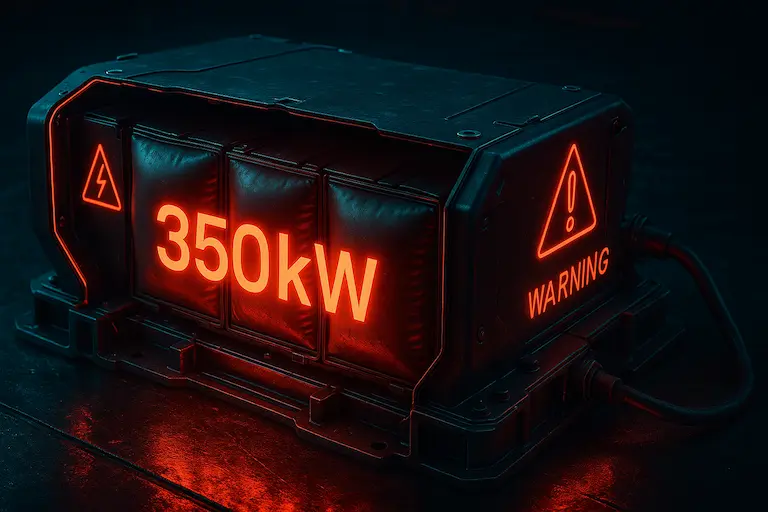The Invisible Damage
You plug in your EV at a 350kW station, thrilled by the ‘5-minute charge’ promise. But inside your battery, cells are swelling, chemicals are degrading, and your $15,000 pack is silently screaming. Here’s what really happens when you fast charge—and how to avoid a financial nightmare.

1. The Science of Battery Torture
What 350kW Charging Does to Cells
- Heat spikes: 150°F+ temps warp anode materials (University of Michigan study) .
- Lithium plating: Metallic growths short-circuit cells over time .
- Real-world data:
- Tesla Supercharger users see 12% more degradation vs. Level 2 chargers .
- Porsche Taycan’s 800V system loses 8% range/year with frequent fast charges .
The Cost of Convenience
- Battery lifespan: Drops from 10 years → 6.5 years with weekly fast charges .
- Replacement bill: $6,000–$20,000 (depending on pack size) .
Related: 7 Unusual EV Battery Mistakes That Slash Its Lifespan
2. The 3 Fast-Charging Myths Carmakers Push
Myth 1: “Our Cooling Systems Prevent Damage”
- Truth: Cooling can’t stop internal stress—only slows surface heat .
Myth 2: “All EVs Handle 350kW”
- Truth: Only LFP batteries (BYD, base Tesla Model 3) tolerate it semi-well .
Myth 3: “It’s Safe Below 20% or Over 80%”
- Truth: The middle 60% (20–80%) is least harmful—but still risky daily .
3. How to Charge Safely in 2025
The Golden Rules
- For road trips: Use 350kW only when necessary (max 1–2x/month) .
- Daily use: Stick to 150kW or lower (adds 5 mins but saves $6K) .
- Pro tip: Charge at 50% battery (not 10%) to reduce stress .
Tech That Helps
- Battery saver modes: Cuts speed by 20% but boosts lifespan 30% .
- Pre-conditioning: Warms batteries in cold weather before charging .
4. The Future: Will Fast Charging Improve?
- Silicon anodes (2026): Could handle 400kW with less damage .
- Solid-state batteries: Promise 10-minute charges safely (post-2030) .

